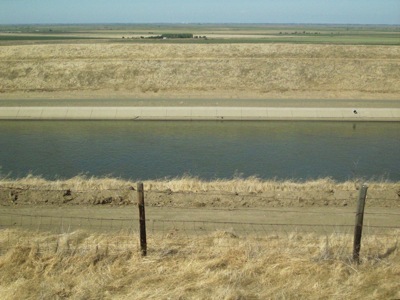
Heading north from Barstow to our apartment, driving along Interstate 5, just before where we were to turn off to take state road 152 through the Pacheco Pass, we saw a little sign reading “Vista Point.” We turned off into a narrow, dreary parking area, and looked down into the California Aqueduct. There’s an explanatory sign that tells you why the California Aqueduct is important. I admit I didn’t read it; I was too interested to look at the water flowing through the uncovered aqueduct, and the parched grass on either side, and the green irrigated agricultural fields of the Central Valley in the distance. It was a hot summer day, and as I stood there looking at the aqueduct, I wondered how much of that water is lost to evaporation on its long journey to southern California.
